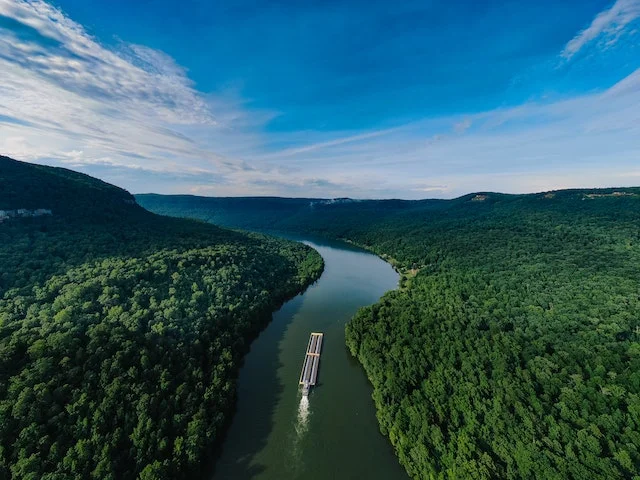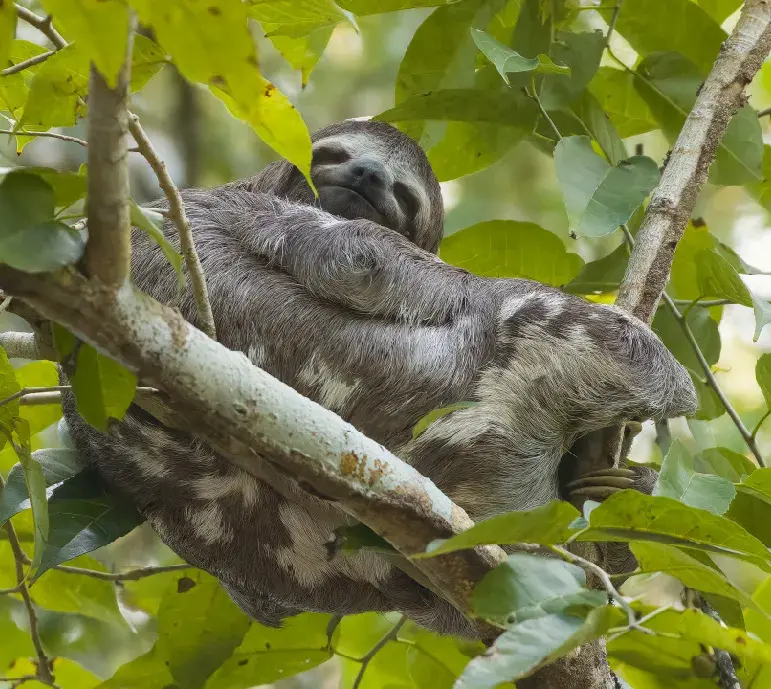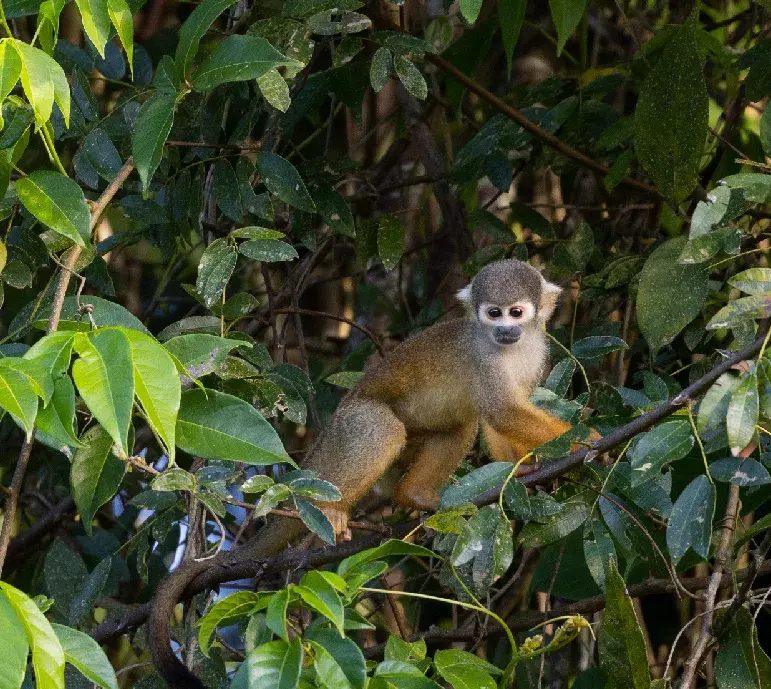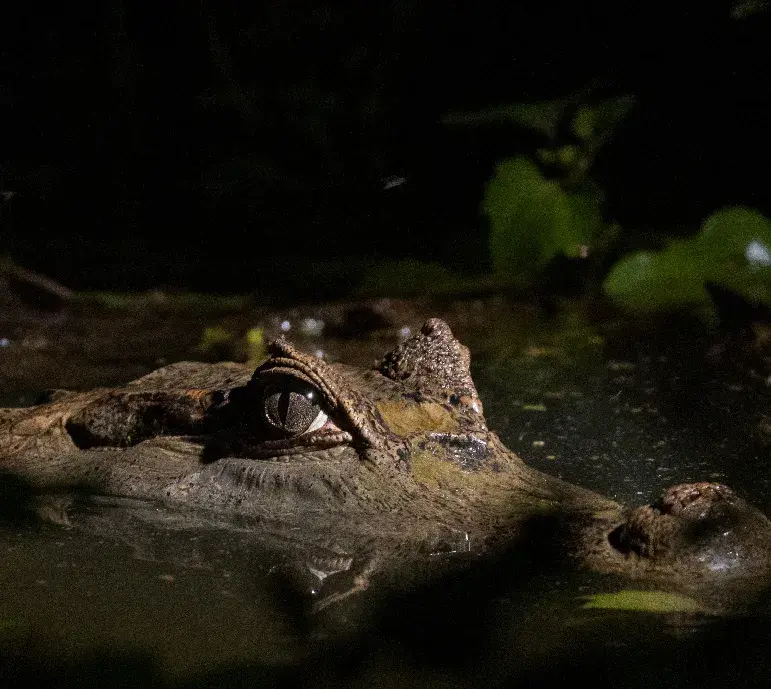Exploring the Biodiversity of the Amazon Rainforest: A Peruvian Perspective
The Amazon Rainforest, located in Peru, is a vital ecosystem known for its rich biodiversity and contribution to climate regulation. However, it faces significant threats due to deforestation and climate change. Initiatives for conservation and preservation, such as those by WWF, aim to protect this unique environment. Exploring the rainforest unveils diverse flora, fauna, and indigenous communities connected to its ecosystem.
Efforts to combat deforestation and mitigate climate change are essential for safeguarding this precious resource. Scientific research plays a crucial role in understanding the Amazon Rainforest, with ongoing initiatives and collaborations driving future perspectives. Supporting conservation organizations and individuals can contribute to the preservation of this invaluable ecosystem.

The Importance of the Amazon Rainforest
The Amazon Rainforest in Peru plays a crucial role in the ecological balance of our planet. Its significance can be understood through three main aspects: the biodiversity it harbors, its contribution to climate regulation, and the threats it currently faces.
The Biodiversity of the Amazon Rainforest
The Amazon Rainforest is a treasure trove of biodiversity, housing an incredible array of plant and animal species. It is estimated that the rainforest is home to more than 10% of all known species on Earth. In Peru alone, numerous species of flora and fauna thrive in this unique ecosystem, some of which are endemic to the region.
The dense canopy and diverse ecosystems within the Amazon Rainforest create ideal habitats for various plant species, including more than 16,000 different tree species. This rich botanical diversity not only supports countless animal species but also provides medicinal resources and contributes to the overall ecological health of the planet.
The Role of the Amazon Rainforest in Climate Regulation
The Amazon Rainforest acts as a critical regulator of the Earth’s climate. Its vast expanse of trees and vegetation absorbs carbon dioxide, one of the primary greenhouse gases responsible for global warming. Through the process of photosynthesis, the rainforest helps to reduce the concentration of atmospheric carbon dioxide, mitigating the effects of climate change.
Furthermore, the Amazon Rainforest has a significant impact on local and regional climates. The forest transpires large amounts of water vapor into the atmosphere, which contributes to rainfall patterns in South America and even influences global weather systems. This moisture also sustains the numerous rivers and waterways that flow through the rainforest.
The Threats to the Amazon Rainforest
Unfortunately, the Amazon Rainforest is under severe threat from various factors, including deforestation, illegal logging, mining activities, and unsustainable agriculture practices. These activities lead to the loss of biodiversity, land degradation, and the release of large amounts of stored carbon dioxide back into the atmosphere, exacerbating climate change.
In Peru, deforestation has been a significant concern, driven by the expansion of agricultural frontiers, illegal logging, and infrastructure development. These activities not only destroy habitats but also disrupt the delicate balance of ecosystems within the rainforest and put immense pressure on indigenous communities living in these areas.
Addressing these threats and implementing effective conservation strategies is of utmost importance to preserve the Amazon Rainforest and its invaluable contributions to global biodiversity and climate regulation.
Initiatives for Conservation and Preservation
Preserving the Amazon Rainforest is a critical endeavor that requires concerted efforts and various initiatives. Several organizations and stakeholders are actively involved in protecting this invaluable ecosystem. In Peru, the World Wildlife Fund (WWF) is at the forefront of conservation efforts, implementing various strategies to safeguard the Amazon Rainforest.
WWF’s Efforts in Protecting the Amazon Rainforest
The WWF has been working tirelessly to protect the Amazon Rainforest in Peru. Through their conservation projects, they aim to safeguard the rich biodiversity present in this vast ecosystem. The organization focuses on establishing protected areas, managing wildlife populations, and promoting sustainable practices.
Legal Frameworks and Policies for Amazon Rainforest Conservation
Preserving the Amazon Rainforest requires robust legal frameworks and policies. In Peru, legislation has been enacted to regulate activities such as deforestation and illegal logging. The government is continually working to strengthen these laws and enforce strict compliance to combat environmental crimes that threaten the rainforest.
Promoting Sustainable Practices for Rainforest Preservation
Sustainable practices are crucial for the long-term preservation of the Amazon Rainforest. In Peru, various initiatives aim to promote responsible forestry, agroforestry, and eco-friendly tourism practices. By encouraging sustainable livelihoods and raising environmental awareness, these efforts contribute to the conservation of the rainforest and the well-being of local communities.
- Supporting sustainable agriculture and agroforestry initiatives.
- Encouraging responsible forestry practices with reduced impact on the ecosystem.
- Implementing eco-certification programs to ensure sustainable resource extraction.
- Fostering community-based tourism initiatives that prioritize conservation and respect for local cultures.
By adopting sustainable practices and supporting these initiatives, local communities, businesses, and individuals in Peru contribute to the preservation of the Amazon Rainforest for future generations.
Exploring the Amazon Rainforest
The Amazon Rainforest in Peru offers a captivating opportunity to discover its diverse flora and fauna. As one ventures into this biologically rich ecosystem, a world of wonders unravels.
Discovering the Flora and Fauna of the Amazon Rainforest
The Amazon Rainforest boasts an unparalleled variety of plant and animal species. Towering trees, such as the Brazil nut tree and kapok tree, provide shelter to countless species. Marvel at the vibrant orchids, bromeliads, and other epiphytes that adorn the forest, forming a breathtaking spectacle. Wildlife enthusiasts can encounter fascinating creatures like jaguars, macaws, toucans, anacondas, and sloths, among many others. From the tiny poison dart frogs to the majestic pink dolphins, each species contributes to the intricate web of life within the rainforest.
Indigenous Communities and their Connections to the Amazon Rainforest
The Amazon Rainforest is not only a haven for wildlife; it is also home to numerous indigenous communities that have inhabited these lands for generations. These resilient communities maintain a deep connection to the rainforest and rely on its resources for sustenance and cultural practices. Engaging with these communities provides a unique opportunity to learn about their traditional knowledge, beliefs, and ancestral customs. Through their wisdom, visitors can gain a profound understanding of the intricate balance between humans and nature within the Amazon Rainforest.
Ecotourism in the Amazon: Balancing Conservation and Economic Development
Exploring the Amazon Rainforest through responsible ecotourism allows visitors to appreciate its wonders while contributing to its preservation. Local communities, conservation organizations, and government initiatives have fostered sustainable tourism practices that prioritize both the protection of the rainforest and the well-being of the communities residing in its vicinity. Guided tours, nature walks, and wildlife spotting give visitors a chance to interact with the environment respectfully. By supporting eco-lodges and local businesses, ecotourism offers a means for sustainable economic development while ensuring the long-term conservation of the Amazon Rainforest.
Efforts in Combating Deforestation and Climate Change
The Amazon Rainforest in Peru faces significant threats from deforestation and climate change. The impact of deforestation on the Amazon Rainforest is profound, leading to the loss of precious habitat for numerous species and exacerbating global climate change.
The Impact of Deforestation on the Amazon Rainforest
Deforestation in the Amazon Rainforest has far-reaching consequences. It results in the loss of biodiversity as numerous plant and animal species lose their natural habitats. Furthermore, deforestation disrupts the delicate balance of the ecosystem, leading to imbalances in nutrient cycling and carbon storage. The clearance of trees also leads to increased greenhouse gas emissions, contributing to climate change at a global scale.
Strategies for Reducing Deforestation in the Amazon Basin
Efforts to combat deforestation in the Amazon Basin are vital for preserving this unique and diverse ecosystem. Strategies for reducing deforestation include:
- Strengthening Law Enforcement: Enhancing the enforcement of existing laws against illegal logging and land invasion is crucial. This includes implementing stricter penalties for offenders and increasing surveillance and monitoring in deforestation hotspots.
- Supporting Sustainable Agriculture Practices: Promoting and incentivizing sustainable agroforestry practices can help reduce the need for further deforestation. Encouraging responsible land use and supporting farmers in adopting sustainable techniques can contribute to long-term conservation efforts.
- Promoting Alternative Livelihoods: Providing alternative income-generating opportunities, such as eco-tourism or sustainable resource management, can reduce reliance on activities that drive deforestation, such as illegal logging or land clearing for agriculture.
Mitigating Climate Change through Amazon Rainforest Conservation
The conservation of the Amazon Rainforest plays a crucial role in mitigating climate change. As one of the largest carbon sinks on the planet, preserving the Amazon’s intact forests helps to sequester vast amounts of carbon dioxide and reduce greenhouse gas emissions. Efforts to mitigate climate change through Amazon Rainforest conservation include:
- Supporting REDD+ Initiatives: REDD+ (Reducing Emissions from Deforestation and Forest Degradation) programs provide financial incentives for countries and communities to protect and sustainably manage forests. Supporting such initiatives contributes to both the preservation of the Amazon Rainforest and global climate change mitigation.
- Investing in Reforestation: Reforestation efforts in degraded areas of the Amazon Rainforest can help restore lost forest cover and enhance carbon sequestration. Planting native tree species and ensuring their long-term survival is crucial for ecosystem restoration and climate resilience.
- Promoting Renewable Energy: Encouraging the transition to clean and renewable energy sources helps reduce the reliance on fossil fuels, mitigating the drivers of climate change. Supporting renewable energy initiatives within the Amazon region can contribute to both local and global climate change mitigation efforts.
Efforts in combating deforestation and climate change must be collaborative and multi-faceted. By combining strict law enforcement, sustainable land management practices, and international cooperation, we can work towards a sustainable future for the Amazon Rainforest and our planet.
The Role of Science and Research in Understanding the Amazon Rainforest
The Amazon Rainforest in Peru is a hotspot for scientific studies and discoveries, providing invaluable insights into the complexity and richness of this diverse ecosystem. Researchers from around the world, in collaboration with local communities, play a crucial role in deepening our understanding of the Amazon Rainforest.
Scientific Studies and Discoveries in the Amazon Rainforest
Scientific studies conducted in the Amazon Rainforest have unearthed fascinating discoveries, shedding light on its intricate ecological dynamics. Research teams have delved into various aspects, including biodiversity assessment, species interactions, and ecological processes. With advanced technologies and meticulous fieldwork, scientists have documented an astounding array of species, both known and previously undiscovered.
Exploring the rainforest’s flora, researchers have identified numerous plant species with promising medicinal properties, offering potential breakthroughs in healthcare. The discovery of unique compounds and their applications in pharmaceuticals highlights the value of continued research in the Amazon Rainforest.
Furthermore, studies have focused on understanding the interactions between flora and fauna, unraveling the complex web of ecological relationships. These investigations yield vital knowledge regarding the critical role of each species in the rainforest’s ecosystem and contribute to conservation efforts.
Collaboration between Researchers and Local Communities
In Peru, researchers recognize the significance of collaborating with local communities residing near the Amazon Rainforest. Their traditional knowledge, accumulated across generations, provides invaluable insights into the rainforest’s ecological intricacies and the sustainable practices adopted by indigenous cultures.
Collaborative efforts enable researchers to gain a deeper understanding of the rainforest’s dynamics, facilitated by engaging with local communities and respecting their traditional knowledge. By fostering partnerships, researchers ensure that their studies incorporate indigenous perspectives, enhancing the accuracy and relevance of their findings.
Moreover, these collaborations promote mutual learning, sharing scientific knowledge and methodologies with local communities while integrating traditional knowledge into scientific research. This dynamic exchange facilitates a holistic approach to studying and conserving the Amazon Rainforest.
Ongoing Research Initiatives and Future Perspectives
The importance of ongoing research initiatives cannot be understated in comprehending the Amazon Rainforest’s vast complexities. Researchers are continuously striving to expand knowledge through long-term monitoring projects, remote sensing technologies, and interdisciplinary studies.
Future perspectives in Amazon Rainforest research lie in harnessing innovative technologies such as satellite imagery, genomics, and spatial modeling to unravel the intricate relationships between the rainforest’s biodiversity, climate patterns, and human activities. These advancements hold the potential to inform evidence-based conservation strategies and develop sustainable practices for the region.
Furthermore, fostering international scientific collaborations and securing funding support are vital for the continuity of research efforts in understanding the Amazon Rainforest. By encouraging the exchange of expertise and resources, scientists can effectively address the complex challenges associated with rainforest preservation and climate change mitigation.
- Scientific studies in the Amazon Rainforest contribute to our understanding of biodiversity, species interactions, and ecological processes.
- Collaborations with local communities respect traditional knowledge and enhance research outcomes.
- Ongoing research initiatives, coupled with innovative technologies, hold promise for future discoveries and conservation strategies.
Supporting the Conservation of the Amazon Rainforest
The Amazon Rainforest in Peru is a precious ecosystem that requires collective efforts to ensure its preservation. Numerous organizations and projects are dedicated to safeguarding the rainforest and tackling the pressing issues it faces. By supporting these initiatives, individuals can actively contribute to the preservation of this invaluable natural treasure.
Organizations and Projects Working for Amazon Rainforest Conservation
Several organizations and projects are tirelessly working towards the conservation of the Amazon Rainforest in Peru. These include NGOs such as the Amazon Conservation Association (ACA), Rainforest Foundation US, and the Amazon Environmental Research Institute (IPAM). Moreover, collaborations between governments, local communities, and international bodies like the United Nations Development Programme (UNDP) contribute to the efforts to protect the rainforest’s biodiversity and promote sustainable practices.
Ways Individuals Can Contribute to the Preservation of the Amazon Rainforest
As individuals residing in Peru, there are various ways to support the conservation of the Amazon Rainforest. Firstly, promoting responsible tourism and choosing eco-friendly accommodations and tour operators can help minimize the impact on the ecosystem. Additionally, purchasing sustainably-sourced products, such as fair-trade and certified organic goods, can reduce demand for products linked to deforestation. Supporting local communities through community-based tourism initiatives and fair trade practices also fosters sustainable development in the region.
Furthermore, raising awareness about the importance of rainforest conservation among friends, family, and social networks can have a significant impact. Sharing information through social media, participating in educational programs, and attending environmental events are simple yet effective ways to spread awareness and encourage others to take action.
Advocating for Policies and Awareness on the Importance of Rainforest Conservation
Advocacy plays a crucial role in protecting the Amazon Rainforest. Supporting organizations that work towards policy changes and lobbying for legislative measures aimed at conserving the rainforest help create an enabling environment for conservation efforts. Encouraging government bodies to prioritize the implementation of sustainable practices and enforce stricter regulations against deforestation is essential for long-term preservation.
Furthermore, promoting public awareness campaigns and educational initiatives about the importance of the Amazon Rainforest can foster a culture of conservation among Peruvian citizens and beyond. Collaboration with educational institutions, media outlets, and public figures can help disseminate accurate information about the rainforest’s biodiversity, benefits to climate regulation, and its significance for indigenous communities.
By actively participating in advocacy and awareness initiatives, individuals can contribute to the collective effort required to protect and conserve the Amazon Rainforest for future generations. Together, we can ensure the long-term viability of this unique and vital ecosystem.



